
 

 

 Brian
Webster / bwa.ca.hemp@gmail.com
415-243-8900
/ BrianWebster.com
California
Hemp Industry Consulting
Business
Development & Marketing
Brian
Webster / bwa.ca.hemp@gmail.com
415-243-8900
/ BrianWebster.com
California
Hemp Industry Consulting
Business
Development & Marketing
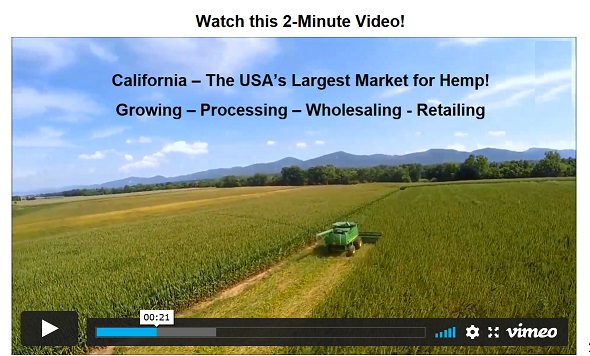
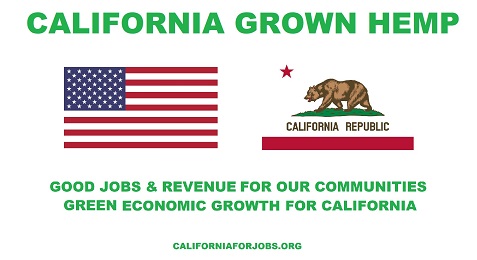
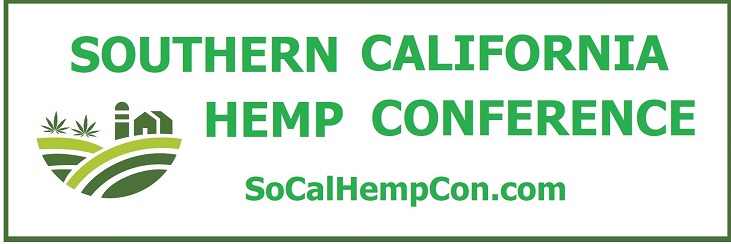 --------------------------------------------------------------------------------------------------------------------------------------
--------------------------------------------------------------------------------------------------------------------------------------
Hemp is now a completely legal crop in the USA!
Under the new Farm Bill laws,
hemp will be managed by Department of Agriculture as a crop rather
than by the Justice Department as an illegal substance. Hemp
is now legal coast-to-coast! This means:
Banks and payment processors/credit card companies can service
the hemp industry
Investment and capital infusion is allowed
in both the oil and fibrous hemp businesses
Interstate commerce of hemp and hemp
products is allowed
Convicted felons can join the industry
10 years after the bill passed
Hemp farmers will be allowed to buy
crop insurance for the first time.
Hemp futures can be traded for the first
time, locking in prices for farmers
CALIFORNIA HEMP INDUSTRY 101
California is positioned grow into the
USA's largest hemp growing, production and consumption market.
It is the largest state by population, the third largest state
by area, the largest agricultural state, and has no snow or frost
in its prime growing areas. While states like Colorado, Oregon
and Kentucky have been growing hemp for many years, California
will surpass them all in hemp production and sales in the next
few years.
"CBD hemp" is now being grown
all over California. "Industrial hemp" is only starting
to be grown here. Many companies are now entering the California
CBD hemp industry because it is both legal and has less tax and
regulation than the CBD industry related to medical cannabis.
Licensed medical cannabis growers can only grow ¼ acre
outdoors.
California Hemp Regulation
Hemp is legal to grow in California, and
in all its 58 counties. However, half of California counties
still have temporary bans or restrictions on growing hemp. The
counites that are welcoming hemp agriculture are getting a clear
jump on the proven economic benefits of hemp. Hemp in California
has no special taxes. Farmers can grow as many acres as they
wish on land zoned for agricultural purposes. LA county now has
a 100-acre hemp farm.
The California Department of Food and Agriculture
(CDFA) is the state agency responsible for hemp regulation in
California. The CDFA works with the counties on hemp agriculture
rules and its farming registration process. Hemp farmers need
to register with their local County Agricultural Commissioner.
County Agricultural Commission offices share a registration fee
with CDFA and information from a one-page registration form.
The California hemp farming fee is $900. per year.
The Industrial Hemp Advisory Board (IHAB)
is a voluntary board that advises CDFA on hemp rules and regulation.
It has public meetings at the CDFA building in Sacramento.
The California Department of Food &
Agriculture reports that there are now over 550 Registered Hemp
Growers and Seed Breeders in the state, registered to grow over
50,000 acres of land. Applications continue to come in to CDFA
from county agriculture commission offices and the numbers continue
to increase.
As with the national trend, 95% of the
hemp being grow in California is CBD hemp rather than industrial
hemp. This is due to the US market valuing CBD hemp over 10 times
more than industrial hemp.
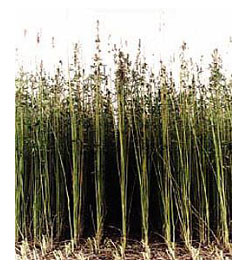
Industrial hemp stalks grow
similar to bamboo.
25,000 PRODUCTS CAN BE MADE FROM INDUSTRIAL
HEMP
Hemp is used by the automobile industry
as reinforcement fiber in "biocomposites" - press-molded
or injection molded parts used in doors panels, boot liners etc.,
where they are replacing fiberglass composites or more expensive
plastics.
Hemp is used in foods such as bread, energy
bars, waffles, granola, coffee, beer, veggie burgers, pretzels,
salad dressings, and many food products. Hemp seed oil is an
excellent replacement for unhealthy fats in foods due to its
excellent balance of the essential fatty acids linoleic acid
(omega-6) and alpha-linolenic acid (omega-3). Consuming the right
balance of essential fatty acids found in hemp seed oil offers
significant health benefits, including an improved HDL/LDL cholesterol
ratio, reducing the symptoms of dermatitis, of rheumatoid arthritis
and other inflammatory diseases, as well as improving and optimizing
development in infants.
Hemp is used in body care products such
as lotions, lip balms, conditioners, shampoos, and soaps. It
also may be used as biofuel in the production of ethanol, a plant
based gasoline additive and replacement.
INDUSTRIAL HEMP IN CALIFORNIA
Hemp is already a market commodity. According
to a study commissioned by the Hemp Industries Association, the
annual United States retail market for hemp products has grown
steadily since 1990 to approximately $400 million in 2009, increasing
at a rate of about $26 million annually.
The hemp products industry is particularly
strong in the Golden State, where 77 percent of U.S. sales of
hemp food and personal care products are earned by California
companies. Dr. Bronner's Magic Soaps, for instance, is a California
business based in Escondido that is the number one producer of
natural soap in the world, selling about $20 million worth of
soap annually. In the last five years Dr. Bronner's spent $800,000
importing hemp oil from Canada.
Dr. Bronners is just one of the many California
businesses that could support local farmers in growing hemp with
the passage of this bill by purchasing from Californian rather
than Canadian farmers.
Consumers are benefiting from healthy industrial
hemp products and manufacturers are enjoying a rapidly growing
market. The only ones not benefiting from industrial hemp are
California farmers.
The Canadian industrial hemp crop is limited
by a short growing season, dependency on rainfall, and cooler
temperatures. California's warm climate and use of irrigation
would enable hemp farmers to achieve significantly higher seed
and fiber yields than in Canada.
GOOD FOR AGRICULTURE & GOOD FOR
THE ENVIRONMENT
In addition to economic benefits, hemp
has strong agricultural benefits as well. It requires little
or no pesticides and herbicides and improves soil conditions
making it an excellent rotational crop of particular interest
to organic farmers.
Hemp's dense growth smothers out competing
plants and delivers a field ready for the next rotation that
is virtually free of weeds. This is particularly helpful in rotation
with weeding-intensive crops like strawberries. The positive
role hemp plays in sustainable crop rotations reduces chemical
use and saves farmers money.
Industrial hemp has many environmental
benefits. It is a source for paper, building insulation, and
fiber board. As our demand for wood products grows we could save
our trees for higher-end uses such as lumber, and supplement
paper and fiber board production with hemp. An acre of hemp produces
2 to 4 times more fiber than an acre of timber and it grows from
seeding to maturity in just 90 days. Hemp also can be used as
a raw material for ethanol fuel and is particularly promising
for emerging cellulostic ethanol technologies due to its rapid
growth.
HEMP NOT NEW TO THE UNITED STATES OR
CALIFORNIA
Industrial hemp has a long history of commercial
use and cultivation in California and the United States. In colonial
Virginia and Connecticut the cultivation of hemp was mandatory
for farmers. Both Thomas Jefferson and George Washington grew
hemp on their plantations. As recently as World War II the U.S.
government encouraged farmers to grow hemp in the "Hemp
for Victory" campaign to supply cordage for the war effort.

World War
II era U.S. government poster
From around 1900 to 1920 hemp was grown
as a commercial crop in California. Some areas known for hemp
cultivation were Gridley in Butte County, Courtland in the lower
Sacramento Valley, Rio Vista in Solano County, and Lerdo near
Bakersfield.
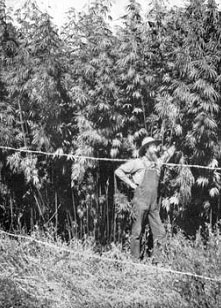
The 1903 USDA Yearbook shows
industrial hemp grown
in Gridley, CA that was
well over 10 feet tall.
HEMP AND THE FEDERAL GOVERNMENT
The 1937 Marijuana Tax Act was passed in
the U.S. Congress with promises in the floor debates that it
would not prohibit the production of non-psychoactive industrial
hemp. The crop continued to be grown in the United States until
the mid-1950s when soft markets and increasing government harassment
made other crops more desirable.
Today, the 1970 Controlled Substances Act
is the federal statute that regulates industrial hemp. The 1937
definition for marijuana was lifted from the existing statute
and adopted with no debate on the language excluding sterilized
hemp seed, hemp fiber, and hemp seed oil from regulation. Therefore,
the U.S. Congress never voted to make the cultivation of industrial
hemp illegal. In 1970 there were imported hemp products in the
marketplace such as canvas and rope, but no hemp farmers left
to ensure that cultivation was appropriately addressed.
Processed hemp is now sold in the United
States for paper, cloth, canvas, rope, food products, soaps,
body care products, biocomposite materials and many industrial
commercial uses. However, all hemp used in the United States
is imported.
CONTROLLED SUBSTANCE?
The federal DEA tried to classified industrial
hemp as a controlled substance by regulation. However, in 2004
the 9th Circuit Court of Appeals ruled that the DEA did not have
the authority to regulate hemp under the 1970 Controlled Substances
Act since hemp seed, fiber, and oil are excluded. The DEA dropped
its appeal of that decision and the 9th Circuit Court ruling
now stands as U.S. law on the issue.
NO CONFLICT WITH FEDERAL LAW
Under SB 767 only the excluded, non-federally-regulated
parts of the plant would enter commerce of any kind, whether
in-state or interstate, except for an in-state market for viable
hemp planting seed for which there is no national market. For
that reason, the U.S. Supreme Court's medical marijuana decision
in Gonzales v. Raich, 545 U.S. 1 (2005) does not in any way suggest
a pre-emption problem with SB 676.
In Raich the Court reasoned that the interstate
market for marijuana would exert a "pull" on in-state
medical marijuana because the commodities were fungible. However,
this reasoning cannot be applied to the cultivation of industrial
hemp authorized by SB 676 because:
1. Only non-regulated parts of the plant
would enter interstate commerce, and
2. No part
of the non-psychoactive industrial hemp plant, including the
flowers and seeds, is fungible in the interstate market for psychoactive
marijuana.
Because industrial hemp can't get you high,
there is no interstate "pull" that could divert non-psychoactive
industrial hemp plants, flowers, or seeds as they are useless
in the illegal interstate market for marijuana.
HEMP CAN'T BE USED TO DISGUISE MARIJUANA
Hemp cannot be used to disguise marijuana
for many reasons. Hemp grows densely and the shade works effectively
as a smother crop not only for weeds, but marijuana, which needs
lots of sunlight. Marijuana plants grow, flower and mature later
than hemp and would be overtaken and shaded out if planted in
a field of hemp.
Cross pollination by industrial
hemp pollen would result in seed production in the marijuana
flowers. This makes them not sellable as an illegal drug. The
flowering tops are the harvested part of the marijuana plant
and flowering is reduced once the plant has been pollinated.
To avoid seeding, reduced flowering, and
less THC production, illegal marijuana growers destroy male plants
before they can pollinate the females and render their product
not smokable. Blowing hemp pollen would result in particularly
heavy seed production in a marijuana grove.
Finally,
if marijuana plants have been cross-pollinated by hemp, the resulting
seeds would produce, in the next generation, plants of uncertain
and generally lower THC drug potency.
Thus, there is no logical reason for growing
hemp alongside marijuana. The pollination of marijuana plants
by male hemp plants reduces the amount of flowers, the amount
of THC containing resin produced per flower, and results in the
production of undesirable seeds - all of which impairs the commercial
value of a marijuana plant.
The last
thing a clandestine marijuana grower wants is a field of industrial
hemp shading out and smothering marijuana plants, blowing pollen
that will produce seeds in marijuana flowers, and reducing the
potency of their next crop.
MOVEMENT TO BRING BACK INDUSTRIAL HEMP
FARMING
Industrial Hemp is currently legal to grow
in more than 30 countries including Canada, Germany, England,
France, Spain, Australia, New Zealand, the Russian Federation,
China, Hungary and Romania.
California is one of fifteen states (the
others are Arkansas, Hawaii, Illinois, Kentucky, Maine, Maryland,
Minnesota, Montana, New Mexico, North Dakota, North Carolina,
Vermont, Virginia, and West Virginia) that have passed pro-hemp
laws or resolutions. An additional thirteen states have considered
pro-hemp legislation or resolutions.
The Farm Bureaus in Ohio and Pennsylvania
have advocated for a return to industrial hemp farming. However,
North Dakota is in the lead among U.S. states with a law and
regulations in place that puts them on track to become the first
U.S. state to grow industrial hemp.
INDUSTRIAL HEMP PRODUCTION MAKES SENSE
FOR CALIFORNIA
Among the
more than 1,000 member companies of the Hemp Industries Association,
150 of them are based right here in California. These companies
are importing or buying a Canadian product that can be easily
grown in California. Nutiva, an organic food company based in
Sebastopol, CA believes they can save more than $100,000 per
year in transportation costs if they could buy hemp seeds from
California farmers.
With so many hemp product manufacturers
based in California and with a large number of acres planted
in crops that could benefit in rotation with hemp, this region
is particularly well-suited industrial hemp cultivation. The
California Industrial Hemp Farming Act makes sense for California
farmers, businesses, and consumers.
Credit
to The Hemp Industries Association:
www.thehia.org
 
|